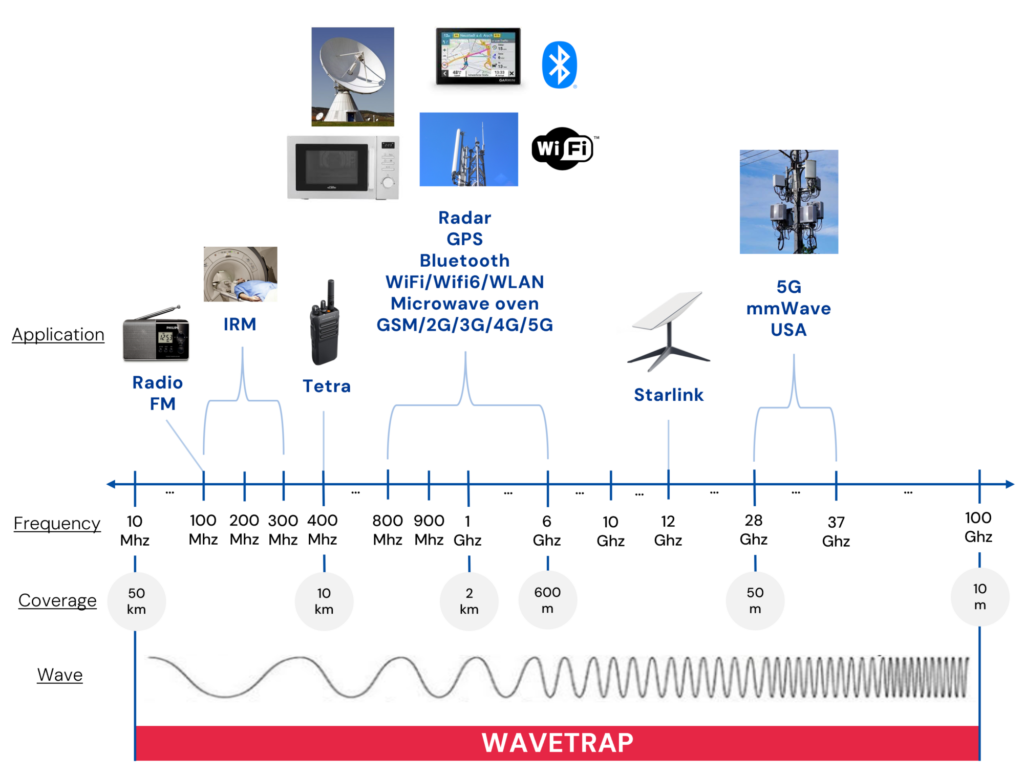Electric waves and electromagnetic waves are fundamental physics concepts used to describe the behaviour of electricity and magnetism. While they are closely related, there are important distinctions between them.
What are electric waves?
Electric waves describe the flow of electrons in a circuit. They are variations in electrical voltage along a conductor. They require a physical medium, usually metallic conductors and are essentially linked to the movement of electrons. These waves can be generated by sources such as electrical generators.
Electric waves are commonly used in electrical circuits, transmission cables and electronic systems.
They heat a filament inside electric light bulbs, producing light, generate heat in electric heaters and are manipulated in electronic circuits to power mobile phones, computers and televisions.
What are electromagnetic waves?
Electromagnetic waves are created by the interaction between electric and magnetic fields. They can propagate in a vacuum and need no material support. Photons are the smallest packets of energy that propagate as electromagnetic waves. You can “feel” an electromagnetic wave if it excites the atoms in your body and causes them to vibrate as they absorb and re-emit photons, giving off heat.
Examples of electromagnetic waves
For example, sunburn is caused by photons from the Sun. Also examples of electromagnetic waves are visible light, microwaves, radio waves and X-rays.
The waves are used in televisions to pick up signals and display images and sound, mobile phones to establish wireless communications between devices, microwave ovens to rapidly heat food by agitating the water molecules it contains, Magnetic Resonance Imaging (MRI) machines to create detailed images and satellites to transmit communication signals.
As we have seen electrical and electromagnetic waves are utilized by a variety of devices for applications as diverse as lighting, heating, communication and medical imaging. Understanding these principles is crucial to the development and operation of many modern technologies.

6 factors act as signal blockers of electromagnetic waves
The ability of electromagnetic waves to propagate depends on the frequency of the wave and the characteristics of the medium through which they travel. Certain substances and conditions can hinder or stop their propagation such as:
- Absorption by materials: Some materials, including certain types of glass, water and metallic materials, have the ability to absorb electromagnetic waves leading to significant attenuation of the signal.
- Reflection: Electromagnetic waves can be reflected by metal surfaces. They can bounce back and be reflected in a different direction rather than continuing to propagate in the original direction.
- Blockage by physical obstacles: Physical obstacles such as buildings, mountains or metal structures can block or attenuate electromagnetic waves. Also known as “obstruction” it can result in shadow zones where the signal is weakened or completely interrupted.
- Diffraction: Diffraction is a phenomenon whereby electromagnetic waves will bypass the edges of an obstacle. However, if the obstacle is large enough relative to the wavelength of the electromagnetic wave, diffraction can be limited.
- Electromagnetic interference: Other sources, such as electronic equipment, can disrupt the propagation of electromagnetic waves. This can be particularly relevant in densely populated environments where many devices are transmitting signals.
- Earth’s atmosphere: Certain types of electromagnetic waves can be absorbed by certain layers of the earth’s atmosphere. For example, very high frequency radio waves can be absorbed by the ionosphere.
As we have seen, several factors can impact the attenuation of electromagnetic waves to varying degrees. By controlling these variables, we can also better manage electromagnetic pollution, electromagnetic interference and cyber privacy?
What about electromagnetic pollution?
We come into contact with electromagnetic fields every day and the growth of “electromagnetic pollution” is worrying more and more people. Studies are ongoing about the effects of electromagnetic fields on humans and electromagnetic hypersensitivity. They include the ISSeP (Scientific Institute of Public Service) and the University of Ghent measuring electromagnetic fields in order to assess public exposure. The BBEMG (Belgian BioElectroMagnetic Group) is specifically interested in the effects of electric and magnetic fields, at the grid frequency (50 Hz), generated by the transportation and use of electrical energy as well as electrical hypersensitivity and UCL (Université catholique de Louvain) conducts studies to understand the biological effects of prolonged exposure to radio waves. So far laboratory studies have shown no link between low-frequency magnetic fields and diseases.
However, it is a matter of concern and people are looking for solutions such as geobiology.
What about electromagnetic interference?
Electromagnetic interference is the disturbance of the operation of an electronic device that typically occurs when a device is close to an electromagnetic field.
There are ways to improve the performance and reliability of devices in professional facilities by reducing the level of electromagnetic radiation that is present within the environment.
What about cyber security?
It is not well known but electrical measurements (EM) is one factor to be considered in the cyber risk analysis. It might be the root cause of data leakage via eavesdropping, image reconstruction, war driving, etc. Controlling EM is also a means of controlling the ability to reduce the risk of a cyber-attack
Mastering the EM topic is also understanding and better apprehending the above listed concerns.
Solutions such as WAVETRAP, the transparent glass product from WAVE by AGC. It offers best protection by preventing the transmission of unwanted electromagnetic radiation to indoor environments. Invisible to the eye and featuring high coating technology, reduces radiation pollution. It can be used indoors to provide shielding between separate spaces. It also blocks waves without losing light and does not affect the insulating or thermal performance of glazing.
Speak to us to discover more about how to optimize protection against exposure to electromagnetic waves and ensure consistent connectivity.

